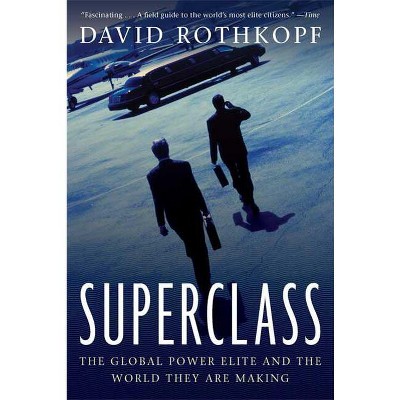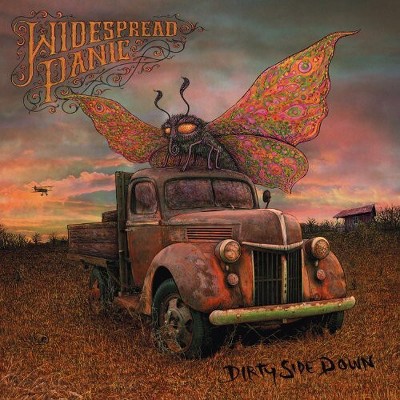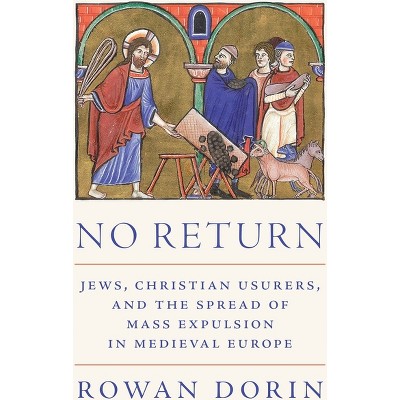Sponsored

The Crowd in the Early Middle Ages - (Histories of Economic Life) by Shane Bobrycki (Hardcover)
$39.95
In Stock
Eligible for registries and wish lists
Sponsored
About this item
Highlights
- The importance of collective behavior in early medieval Europe By the fifth and sixth centuries, the bread and circuses and triumphal processions of the Roman Empire had given way to a quieter world.
- About the Author: Shane Bobrycki is assistant professor of history at the University of Iowa.
- 336 Pages
- History, Europe
- Series Name: Histories of Economic Life
Description
About the Book
"Until now, almost all historians have seen the de-urbanized, de-populated early Middle Ages as a crowdless world. But crowds did not disappear in Europe between 500 and 1000, historian Shane Bobrycki shows. The Crowd in the Early Middle Ages is the first book-length study of crowds in post-Roman European history. After fifth- and sixth-century urban and demographic decline, European gatherings were smaller, less spontaneous, and easier for elites and rulers to control. But crowds remained central to the agrarian economy; they played a vital role in politics and religion. Assemblies, festivals, fairs, and the church's invisible multitude of saints ensured that collective behavior remained central to public life. Early medieval women and men sought to recreate and reimagine Rome's lost crowds. Bobrycki demonstrates that between inherited Christian values and new material constraints on gathering, elites abandoned old prejudices against mobs and rabbles while embracing the crowd's legitimacy, with lasting results for European institutions. Non-elites resisted authority by avoiding or repurposing expected collective behaviors. The Crowd in the Early Middle Ages argues that the history of early medieval crowds illuminates the transition from the ancient world to the Middle Ages. Early medieval communities inventively reimagined collective behaviors: taxation, in an age of weak governments, involved controlling seasonal crowds. Enduring religious and political practices, the book argues, had their origins in a forgotten early medieval crowd regime. In the medieval period, elites began to draw distinctions between "good" and "bad" crowds, with good crowds acting as a legitimizing force and bad crowds portrayed as unruly, often female mobs. In this sweeping analysis of European life in the Middle Ages, Bobrycki explores the world shaped by the early medieval crowd regime and encourages historians to rethink their understanding of collective behavior"--Book Synopsis
The importance of collective behavior in early medieval Europe
By the fifth and sixth centuries, the bread and circuses and triumphal processions of the Roman Empire had given way to a quieter world. And yet, as Shane Bobrycki argues, the influence and importance of the crowd did not disappear in early medieval Europe. In The Crowd in the Early Middle Ages, Bobrycki shows that although demographic change may have dispersed the urban multitudes of Greco-Roman civilization, collective behavior retained its social importance even when crowds were scarce. Most historians have seen early medieval Europe as a world without crowds. In fact, Bobrycki argues, early medieval European sources are full of crowds--although perhaps not the sort historians have trained themselves to look for. Harvests, markets, festivals, religious rites, and political assemblies were among the gatherings used to regulate resources and demonstrate legitimacy. Indeed, the refusal to assemble and other forms of "slantwise" assembly became a weapon of the powerless. Bobrycki investigates what happened when demographic realities shifted, but culture, religion, and politics remained bound by the past. The history of crowds during the five hundred years between the age of circuses and the age of crusades, Bobrycki shows, tells an important story--one of systemic and scalar change in economic and social life and of reorganization in the world of ideas and norms.Review Quotes
"It is an important book, valuable work, with deep and mature reflection evidenced through an engagement with a wide constellation of materials and sources. It will set the standard for a generation at least and provide a new starting point for scholars working on social and cultural movements and people and their actions and impulses when in crowds."---Christopher Heath, Al-Masaq
"Sure to become the starting point for advanced students and scholars wanting to understand gatherings in Western and Central Europe. . . . Highly recommended."-- "Choice"
"Bobrycki makes a very good case for the distinctiveness of the 'crowd regime' of the early Middle Ages, distinct both from what came before and what would come after. . . . [A] convincing, thought-provoking, and readable monograph."---Lucy Grig, The Medieval Review
"A richly informed tour de force that compellingly brings the early Middle Ages into a larger historical discourse."---Rory Naismith, Early Medieval Europe
"Highly recommended for readers seeking a more comprehensive perspective on the early medieval world. It highlights the significant, yet often overlooked, role of crowds during this period."---Daniëlle Slootjes, American Historical Review
"Excellent. . . .A fascinating window into an often-misunderstood period of Western European history."---Anthony Webb, Popular History Books
"A superb study."---Levi Roach, History Today
"Bobrycki has devoted himself to a blessedly old-fashioned kind of scholarship, digging through ever-finer shades of meaning, sifting through all the Latin terms that refer to crowds and mobs and gatherings. If you have long wanted to discern the subtle differences in medieval Europe between vulgus, plebs, turba, populus, and rustici, here at last is the book to assist you. And these differences do indeed have weight and significance."---Adam Gopnik, The New Yorker
About the Author
Shane Bobrycki is assistant professor of history at the University of Iowa.Dimensions (Overall): 9.21 Inches (H) x 6.14 Inches (W) x .88 Inches (D)
Weight: 1.53 Pounds
Suggested Age: 22 Years and Up
Series Title: Histories of Economic Life
Sub-Genre: Europe
Genre: History
Number of Pages: 336
Publisher: Princeton University Press
Theme: Medieval
Format: Hardcover
Author: Shane Bobrycki
Language: English
Street Date: November 19, 2024
TCIN: 91188917
UPC: 9780691189697
Item Number (DPCI): 247-51-7921
Origin: Made in the USA or Imported
If the item details aren’t accurate or complete, we want to know about it.
Shipping details
Estimated ship dimensions: 0.88 inches length x 6.14 inches width x 9.21 inches height
Estimated ship weight: 1.53 pounds
We regret that this item cannot be shipped to PO Boxes.
This item cannot be shipped to the following locations: American Samoa (see also separate entry under AS), Guam (see also separate entry under GU), Northern Mariana Islands, Puerto Rico (see also separate entry under PR), United States Minor Outlying Islands, Virgin Islands, U.S., APO/FPO
Return details
This item can be returned to any Target store or Target.com.
This item must be returned within 90 days of the date it was purchased in store, shipped, delivered by a Shipt shopper, or made ready for pickup.
See the return policy for complete information.
Trending Non-Fiction

$19.31
was $20.98 New lower price
4 out of 5 stars with 64 ratings

$18.28
was $19.58 New lower price
4.7 out of 5 stars with 17 ratings

$4.59
MSRP $7.99
Buy 2, get 1 free select books
4.8 out of 5 stars with 123 ratings

$6.20
MSRP $10.95
Buy 2, get 1 free select books
4.8 out of 5 stars with 33 ratings

$7.09
MSRP $9.99
Buy 2, get 1 free select books
4.9 out of 5 stars with 46 ratings
Discover more options
Related Categories
5.0 out of 5 stars with 1 reviews












